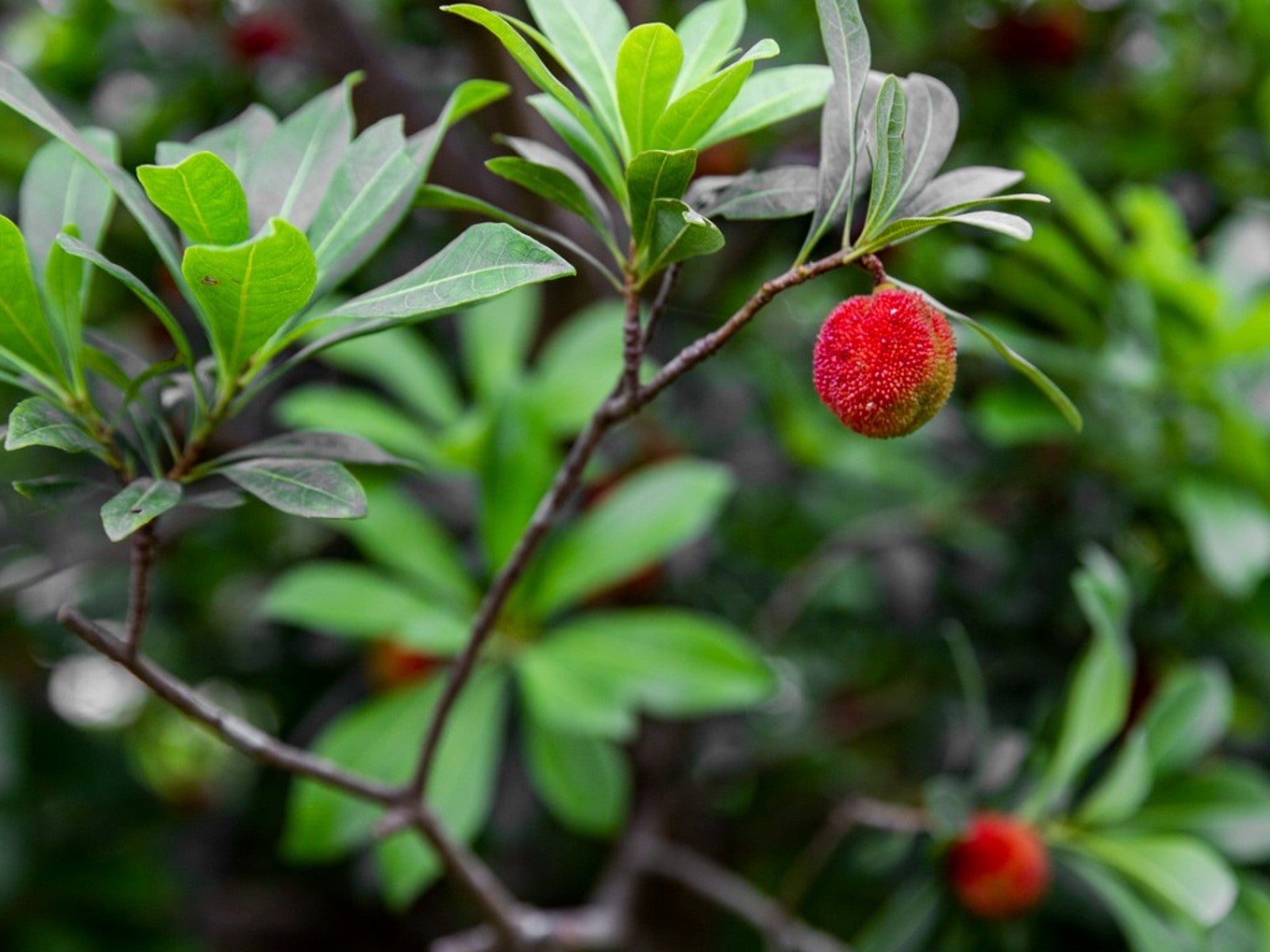Chinese Bayberry Info: Growing And Caring For Yangmei Fruit Trees

Yangmei fruit trees (Myrica rubra) are predominantly found in China where they are cultivated for their fruit and used as an ornamental along streets and in parks. They are also referred to as Chinese bayberry, Japanese bayberry, Yumberry, or Chinese strawberry trees. Since they are indigenous to eastern Asia, you’re probably not familiar with the tree or its fruit and right about now are wondering what the heck is yangmei fruit. Read on to find out about growing Chinese bayberry trees and other interesting Chinese bayberry info.
What is Yangmei Fruit?
Yangmei fruit trees are evergreens that produce purplish round fruit that looks somewhat like a berry, hence their alternate name of Chinese strawberry. The fruit is actually not a berry, however, but a drupe like cherries. That means that there is a single stone seed in the center of the fruit surrounded by juicy pulp.
The fruit is sweet/tart and high in antioxidants, vitamins, and minerals. The fruit is often used to make healthy juices as well as being canned, dried, pickled, and even made into an alcoholic wine-like beverage.
More often marketed as “Yumberry,” production has increased rapidly in China and is now also being imported into the United States.
Additional Chinese Bayberry Info
Chinese bayberry is of significant economic value south of the Yangtze River in China. In Japan, it is the prefectural flower of Kochi and the prefectural tree of Tokushima where it is commonly referenced in ancient Japanese poems.
The tree has been of medicinal use for over 2,000 years for its digestive qualities. The bark is used as an astringent and to treat arsenic poisoning as well as skin disorders, wounds, and ulcers. Seeds are used to treat cholera, heart problems, and stomach issues like ulcers.
Modern medicine is looking at the high levels of antioxidants in the fruit. They are believed to sweep free radicals completely from the body. They also protect the brain and nervous system and are purported to prevent cataracts, skin aging, and to relieve arthritis. The fruit juice has also been used to reduce blood pressure and to restore the malleability of blood vessels as well as to treat diabetes.
Gardening tips, videos, info and more delivered right to your inbox!
Sign up for the Gardening Know How newsletter today and receive a free copy of our e-book "How to Grow Delicious Tomatoes".
Growing Chinese Bayberry
It is a small to medium sized tree with smooth gray bark and a rounded habit. The tree is dioecious, meaning male and female flowers bloom on individual trees. When immature, the fruit is green and matures into a dark red to purple-red color.
If you’re interested in growing your own Chinese bayberry plants, they are hardy to USDA zone 10 and thrive in sub-tropical, coastal regions. Yangmei do best in sun to partial shade. They have a shallow root system that does best in sandy, loamy, or clay soil with excellent drainage and that is either slightly acidic or neutral.

Amy Grant has been gardening for 30 years and writing for 15. A professional chef and caterer, Amy's area of expertise is culinary gardening.
-
 Moody Blooms For Spring: 8 Types Of Black Flowers To Add Drama To Spring Displays
Moody Blooms For Spring: 8 Types Of Black Flowers To Add Drama To Spring DisplaysFrom midnight burgundies to inky violets, several types of black flowers can enrich and embolden a spring display. Try these brooding bloomers for a moody garden
By Tonya Barnett
-
 Can Snake Plants Live Outside? Everything You Need To Know For Snake Plants Al Fresco
Can Snake Plants Live Outside? Everything You Need To Know For Snake Plants Al FrescoSnake plants can live outside given the right conditions, but be careful that they don't take over! Learn the best way to use snake plants in your landscape.
By Mary Ellen Ellis